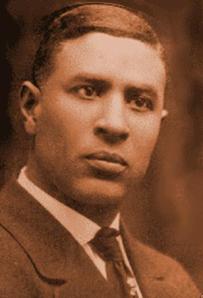On March 4, 1877, Garrett Augustus Morgan, inventor, was born in Paris. When he was young, he attended school and worked on his family’s farm, but as a teenager he left Bourbon County for Cincinnati, Ohio. In Ohio, he would work in the sewing industry and receive acclaim for his  abilities. Following his move to Cleveland in 1895, he opened his own sewing machine equipment and repair shop which eventually expanded to include a tailoring shop with thirty-two employees. The store produced dresses, suits and other clothing that was sewed on equipment that Morgan himself made. He also became involved in the newspaper industry by establishing the Cleveland Call.
abilities. Following his move to Cleveland in 1895, he opened his own sewing machine equipment and repair shop which eventually expanded to include a tailoring shop with thirty-two employees. The store produced dresses, suits and other clothing that was sewed on equipment that Morgan himself made. He also became involved in the newspaper industry by establishing the Cleveland Call.
Garrett’s inventions didn’t end with sewing machines. When automobiles were becoming popular, he realized that something had to be done to regulate traffic. He’d witness accidents on the streets of Cleveland and knew that there must be a way to fix this problem caused by these new automobiles and animal-powered vehicles. Though others had attempted to invent a signal, Garrett Morgan was the first to apply for and acquire a U.S. Patent for the traffic signal. It was even inexpensive to produce! He was granted his patent on November 20, 1923.
The traffic signal wasn’t his only life-saving invention. Morgan had created a “breathing device” — gas mask — in his Cleveland shop. On July 25, 1916, he made national news when he wore the mask to save 32 men trapped below Lake Eerie. Fire departments and other organizations wanted this gas mask, which Morgan’s company could now reproduce. The United States military even came calling about this mask. A refined version was used by the U.S. Army in World War I.
Morgan’s successes allowed him to purchase a home and automobile in Cleveland. He died on August 27, 1963, at the age of 86. He was buried in Lake View cemetery in Cleveland. His inventive spirit left a lasting legacy.
